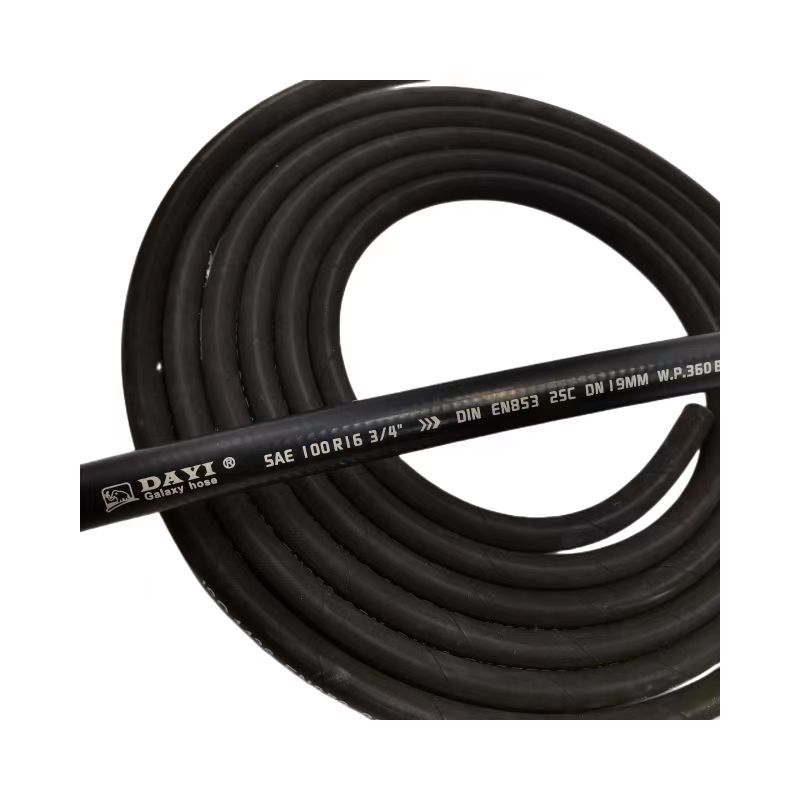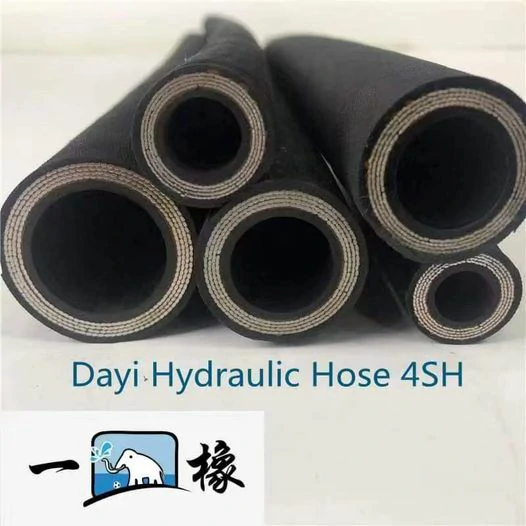1 月 . 07, 2025 10:22 Back to list
hydraulic rubber hose
Hydraulic rubber hoses are an integral component in many industrial and agricultural applications, renowned for their flexibility, durability, and efficiency in fluid power systems. With the continuous evolution of technology, these hoses have become more sophisticated and robust, designed to withstand diverse environments and high-pressure demands. Delving into the world of hydraulic rubber hoses, it's crucial to understand their composition, usage, and innovations that make them indispensable in today's mechanical world.

The anatomy of hydraulic rubber hoses is quite intricate. They are typically constructed with three layers an inner tube, a reinforcement layer, and an outer cover. The inner tube is usually made from synthetic rubber to ensure compatibility with numerous hydraulic fluids, maintaining flexibility and strength under pressure. This is where manufacturers apply extensive scientific expertise to ensure the material performs optimally across various temperatures and pressures. The reinforcement layer is made of coiled or braided wire, which gives the hose its strength and ability to withstand high pressure and stress. Finally, the outer cover, made from synthetic rubber, protects against external damage, environmental factors, and abrasion.
Professionals across industries rely on hydraulic rubber hoses for their unmatched efficiency and reliability. In construction, these hoses are key in operating heavy machinery like excavators and bulldozers, where powerful hydraulic systems are essential. In agriculture, they are critical for the functioning of equipment such as tractors and harvesters, enabling precision and effectiveness in fieldwork. Hydraulic systems, through these hoses, aid in controlling everything from steering to the lifting mechanisms, underscoring their expertise in diverse applications.

The trustworthiness of hydraulic rubber hoses is augmented by rigorous standards and certifications that manufacturers adhere to, ensuring safety and quality. ISO and SAE standards, for example, provide guidelines on the dimensions, performance, and material properties of hydraulic hoses, ensuring they meet necessary safety and efficiency criteria. Such adherence to global standards speaks volumes about the authority and diligence exercised by reputable manufacturers.
Moreover, recent innovations in hydraulic rubber hose technology have further cemented their role as indispensable tools in industrial settings. Advances in materials science have led to the development of hybrid hoses that combine rubber with thermoplastic or metal layers, enhancing durability while maintaining flexibility. Additionally, smart hose technologies now feature sensors that monitor the condition of the hose, providing real-time feedback on pressure and potential leakages. This proactive monitoring enhances maintenance regimes, prolongs the lifespan of hoses, and prevents costly downtimes.
In conclusion, hydraulic rubber hoses remain a vital component in modern machinery, offering a blend of flexibility, strength, and reliability. Their development rooted in extensive research and adherence to international standards positions them as a trustworthy solution in demanding environments. As technology continues to evolve, the future of hydraulic hoses promises even greater innovation and efficiency, reinforcing their status as a cornerstone of industrial and agricultural operations.
-
EN857 2SC Hydraulic Hose Suppliers OEM & China Manufacturers
NewsMay.30,2025
-
51mm Hydraulic Hose Manufacturer China OEM Durable & Custom Solutions
NewsMay.30,2025
-
OEM Rubber Air Hose Supplier Durable Custom Solutions
NewsMay.29,2025
-
High-Pressure Wrapped Cover Steel Wire Spiral Hydraulic Hose Supplier
NewsMay.29,2025
-
Rubber water suction and discharge hose
NewsMar.07,2025
-
SAE 100 R6/EN 854 R6 Fibre Braided Oil Hose
NewsMar.07,2025



